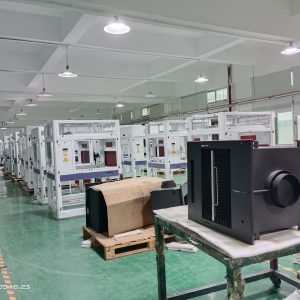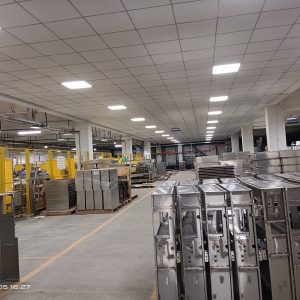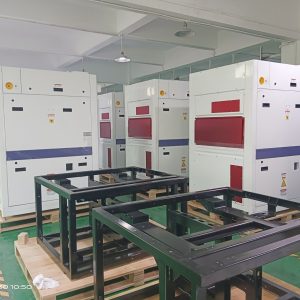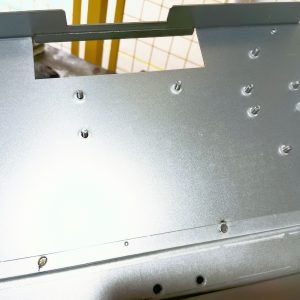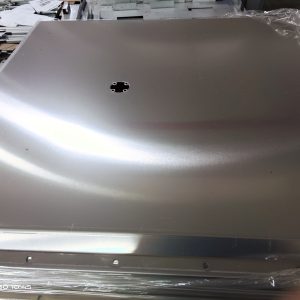Because Sheet Metal parts are manufactured from a single sheet of metal the part must maintain a uniform wall thickness. Sheet metal parts with a minimum of 0.9mm to 20mm in thickness can be manufactured. When designing parts for laser cutting one should not make holes smaller than the thickness of the material.
Sheet metal fabrication involves a variety of processes and techniques to form metal sheets into desired shapes and structures. The following are some basic guidelines and best practices to ensure successful sheet metal fabrication:
1. Material Selection
- Type of Metal: Choose the appropriate metal (e.g., steel, aluminum, stainless steel, copper) based on the application, strength, corrosion resistance, and other required properties.
- Thickness: Determine the appropriate thickness (gauge) for the material based on structural requirements and the limitations of the fabrication process.
2. Design Considerations
- Bend Radius: Design with a proper minimum bend radius to prevent cracking or weakening of the material. The minimum bend radius often depends on the type and thickness of the material.
- K-Factor: Consider the K-factor, which affects the amount of stretching that occurs during bending, to ensure accurate bend allowances and flat pattern development.
- Tolerances: Specify tolerances clearly, considering the capabilities of the fabrication equipment and the material’s properties.
- Notches and Reliefs: Use notches and reliefs to avoid tearing or deforming the material during bending or forming processes.
- Hole Size and Placement: Maintain appropriate distance from edges and other holes to prevent material distortion. The rule of thumb is that the distance should be at least twice the material thickness.
3. Cutting Methods
- Shearing: Suitable for straight cuts. Ensure that the material is held securely to avoid distortion.
- Laser Cutting: Provides precision and is suitable for intricate designs. The material’s thickness and type can affect cutting quality.
- Plasma Cutting: Suitable for thicker materials and offers high cutting speeds.
- Waterjet Cutting: Can cut various materials without affecting their properties, suitable for heat-sensitive materials.
4. Bending and Forming
- Bend Allowances: Account for material stretching during bending. Use bend tables or formulas to determine the bend allowance.
- Bend Orientation: Align the grain direction of the metal parallel to the bend to reduce the risk of cracking.
- Tooling: Use appropriate tooling for the material and desired bend radius. Ensure the tools are well-maintained to prevent surface defects.
5. Joining Methods
- Welding: Common for joining metal parts, but ensure compatibility between the metals and proper welding technique to prevent warping or defects.
- Riveting: Suitable for materials that cannot be easily welded or require a non-permanent connection.
- Bolting: Used for thicker materials and parts that may need disassembly.
- Adhesives: Can be used for bonding different materials or when a seamless appearance is needed.
6. Surface Treatment and Finishing
- Deburring: Remove sharp edges and burrs that may have formed during cutting or punching.
- Surface Coating: Apply coatings such as paint, powder coating, or plating to protect against corrosion and enhance appearance.
- Polishing and Buffing: Improve surface finish and remove minor imperfections.
7. Quality Control
- Inspection: Regularly inspect parts for dimensional accuracy, surface finish, and structural integrity.
- Testing: Perform tests (e.g., tensile, hardness, corrosion resistance) as needed to ensure the material and fabrication process meet the required standards.
8. Safety Considerations
- Personal Protective Equipment (PPE): Use appropriate PPE, such as gloves, safety glasses, and hearing protection.
- Machine Safety: Follow proper safety protocols when operating machinery. Ensure guards and emergency stops are in place.
- Material Handling: Use appropriate tools and equipment for handling and storing sheet metal to avoid injuries and material damage.
By following these guidelines, fabricators can achieve high-quality, consistent results while ensuring safety and efficiency in the sheet metal fabrication process.
Related Links:
china custom sheet metal parts | sheet metal fabrication company china | china sheet metal fabrication companies | china sheet metal fabrication manufacturers | china sheet metal forming manufacturers | china sheet metal fabrication factory | sheet metal fabrication companies in china | sheet metal parts manufacturing china | china sheet metal parts manufacturers | china sheet metal parts company | china metal enclosure manufacturers | china aluminum sheet metal fabrication manufacturers | china sheet metal manufacturing manufacturers
